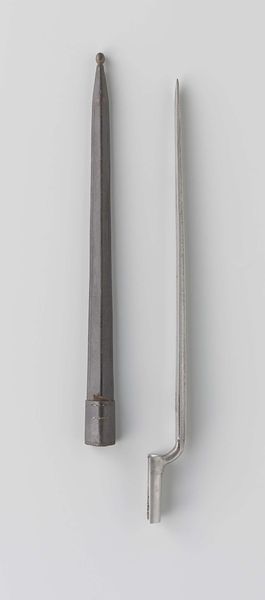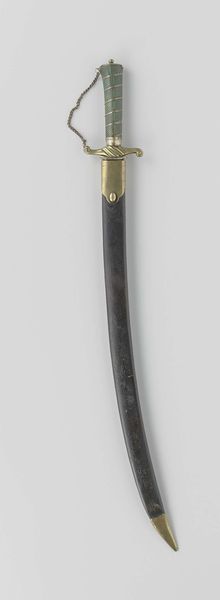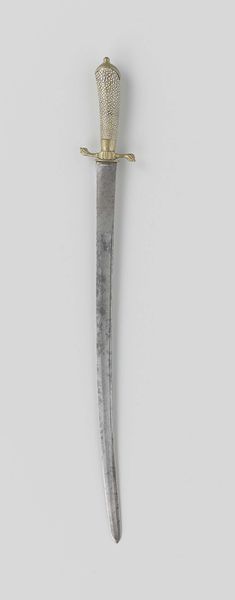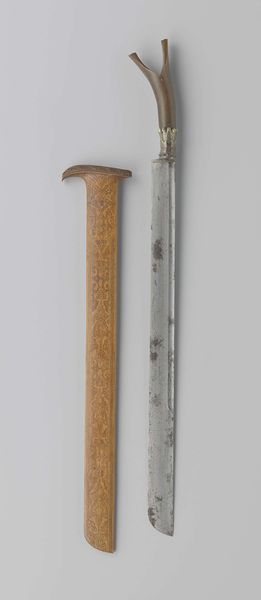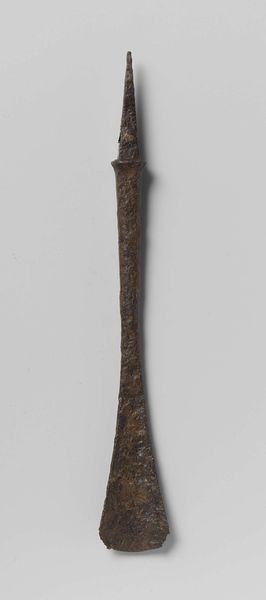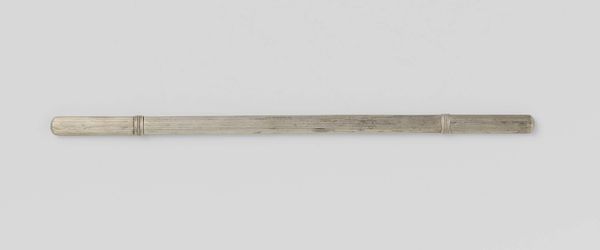
Dimensions: length 66.6 cm, length 52.1 cm, width 2.9 cm
Copyright: Rijks Museum: Open Domain
Editor: Here we have the "Hartsvanger," which roughly translates to "Heart Catcher," a hunting sword from 1775 to 1799 by Harmanus Ferhagrijs. The handle looks to be carved, and there is a striking contrast between the light green and the cold steel of the blade. What do you see in this piece? Curator: Beyond its apparent function, I see a potent symbol of the aristocratic gaze and its implications during that period. Swords like these weren't just tools; they were extensions of power, privilege, and dominance over nature and, by extension, society. What does the term "Heart Catcher" evoke for you? Editor: Well, given it’s a sword, maybe it reflects a conquering of emotions, or maybe even, literally, romance, which could connect with some aristocratic ideas, I think. What statements were the elites trying to make? Curator: Exactly! Think about it within the broader context of 18th-century European society. Hunting was a highly ritualized activity reserved for the elite, reinforcing social hierarchies. This "Heart Catcher" embodies a patriarchal assertion of control. What do you notice about the ornamentation? Does it serve a purely aesthetic purpose, or do you think it reinforces the themes we’re discussing? Editor: The carvings seem floral and delicate, almost juxtaposing the violence of the sword itself. Almost like a softening of its destructive purpose through a beautiful decoration. Curator: Precisely! That juxtaposition is crucial. The delicate ornamentation masks the violence inherent in the object, normalizing it and even making it appealing. It speaks to the way power structures often conceal their brutality beneath a veneer of refinement. Editor: That gives me a new appreciation for the intricate detail – it isn’t just decorative, but actively part of a system of reinforcing social and political ideas. I wouldn’t have considered the sword within a bigger narrative, or the broader history of power it invokes. Curator: That's the exciting thing about art—it prompts these questions and allows us to connect objects like these with historical trends. Hopefully, it is easier to view similar objects through a critical lens going forward!
Comments
No comments
Be the first to comment and join the conversation on the ultimate creative platform.
